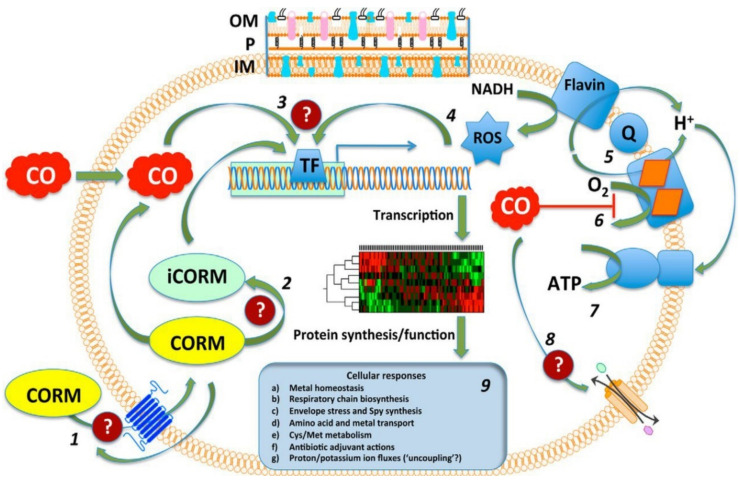Figure 17.
Modes of action and intracellular targets of CORMs. The bacterial membrane includes the inner membrane (IM), the outer membrane (OM), and periplasm (P), which are represented at the top. 1. CORMs enter bacteria by unknown pathways and mechanisms; CO enters the cells by diffusion. 2. After they enter the cell, CORMs release CO, forming inactivated CORM (iCORM). 3. CO, CORM, and iCORM are detected by transcription factors (TFs), causing transcriptional changes. 4. TFs are activated by ROS that may be generated directly by CORMs or can be generated as a result of the interaction of CORMs with the respiratory chain. 5. A simplified aerobic respiratory chain of bacteria is represented, consisting of a flavin-containing NADH dehydrogenase, a ubiquinone (Q) pool, and a terminal heme-containing quinol oxidase. 6. CO binds to the heme-containing quinol oxidase active site, competing with oxygen and impeding respiration. 7. Impairment of ATP generation by ATP synthase. 8. CO or CORM may directly or indirectly interact with IM transporters. 9. Diverse cellular responses to CO and CORM. Question marks represent unknown targets, effects, or mechanisms: transport into (or out of) cells; intracellular mechanisms of CO release from CORMs; interaction with TFs and modification of gene expression by CORMs; effects of CORMs on membrane transporters. Figure reproduced from [146].

